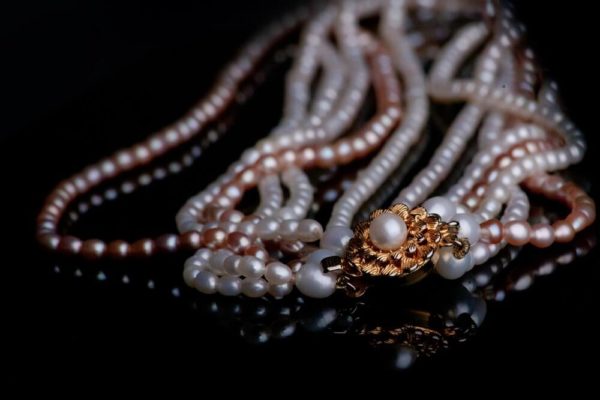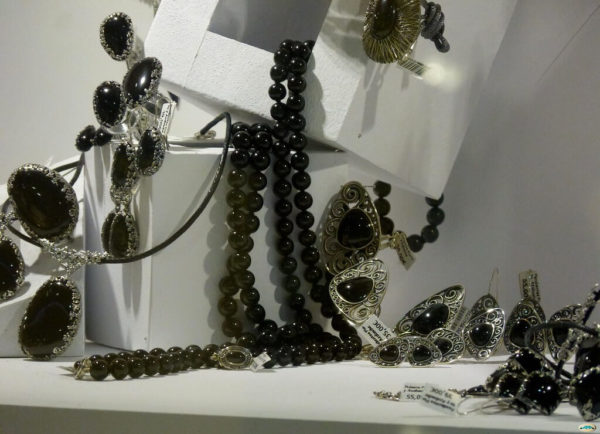Formed by products, by-products or organic components from animals or plants, gems of organic origin occupy a privileged place in jewellery thanks to their rarity, durability and beauty; characteristics that undoubtedly make them desirable objects for any jewellery lover, and for which some of them acquire considerable value. Join us to know which are the main gems of organic origin:
Pearls
They are the most valuable organic gems used in jewellery, especially for the great variety that exists and the elegance they convey. These naturally form as part of a defence mechanism of some species of molluscs, which, in the presence of a foreign element inside, slowly cover it with various layers of a substance known as nacre; to eject it later.

However, natural pearls are very scarce and their value is incalculable. But, thanks to the Japanese businessman Kokichi Mikimoto, who in 1893 would create the world’s first cultured pearls, it is now possible to satisfy the demand for these gems, obtaining by this method pearls of great beauty and quality, indistinguishable from their natural counterpart.
Amber
It is also called succinate, as it contains succinic acid in some cases. Its name comes from the Latin “ambrum” and this in turn from the Arabic anbar, which means precious stone. It is a gem composed of fossilized vegetable resin, with a translucent appearance similar to honey, whose typical colour is yellow, although it is also possible to find it in a wide range of shades including brown, orange, greenish, milky white, and even blue. The latter is known as the rarest and most expensive variety of this gem.

The coral
Belonging to the genus Corallium, this gem derived from skeletons of marine animals, it is composed of calcium carbonate arranged in radial fibres that usually contain remains of organic materials. It exists in a wide variety of colours ranging from red, pink, white, blue and black. Of which, in jewellery, corals that are considered precious are deep red coral, a variety that only exists in the Mediterranean Sea; the so-called angel skin coral which is characterized by having a pinkish white tone that resembles the skin of an ancient porcelain angel; and the black coral or Anthiparian, which is known as the coral of the kings.

The corals suitable for jewellery come mainly from the seas of Japan and the Mediterranean, hence 75 percent of the production of these gems of organic origin is worked in Italy and Japan. It is worth mentioning that, given its importance for the maintenance of marine life, its fishing is currently protected in Gibraltar, Malta, Monaco and Turkey; while in Croatia, Greece, Morocco, Italy and Spain, collection quotas are strictly controlled.
The jet
Known in the ancient world as succinum nigrum, being equated with amber, which is the one with which it is usually commonly associated. Currently, it is also known by other popular names such as black amber or witches’ amber, as it has been widely used for making amulets and magical rituals since ancient times. Well, it is believed that it offers its wearer protection against bad influences, evil eyes and other curses.

It is a fossilized coal, which was subjected to great pressures underground for millions of years until it managed to become a precious stone, with a characteristic intense black colour that fills mystical powers, which can reach a high value.
It is used in artisan jewellery to make necklaces, rings, earrings and other accessories. And the best jetties in the world come from Whitby England and Asturias in Spain.
Ivory
This gem of organic origin is known for its characteristic creamy white colour and great hardness. Being the ivory used in jewellery from various animals such as walrus, hippopotamus, narwhal, warthog and especially the elephant, so fewer pieces of jewellery are made, thanks to the laws that protect the latter. However, there are ecological alternatives that contribute to the preservation of elephants, because, as we know they are in danger of extinction, thanks to poachers.

Among them we have the tagua, a tree that grows in the tropical areas of Ecuador and that resembles the palm. Although it takes between 15 and 20 years to bear fruit, which are used to make jewellery that looks similar to elephant ivory.
Likewise, currently mammoth ivory has become another ecological alternative for ivory jewellery, although it is a little darker and few firms work with this type of material.
Human beings have always been attracted to the beauties of nature and without a doubt, gems of organic origin constitute some of the most beautiful materials that nature can provide us, full of special and unique properties in the world; and an incomparable beauty that awakens the admiration of those who see them.




ALFA